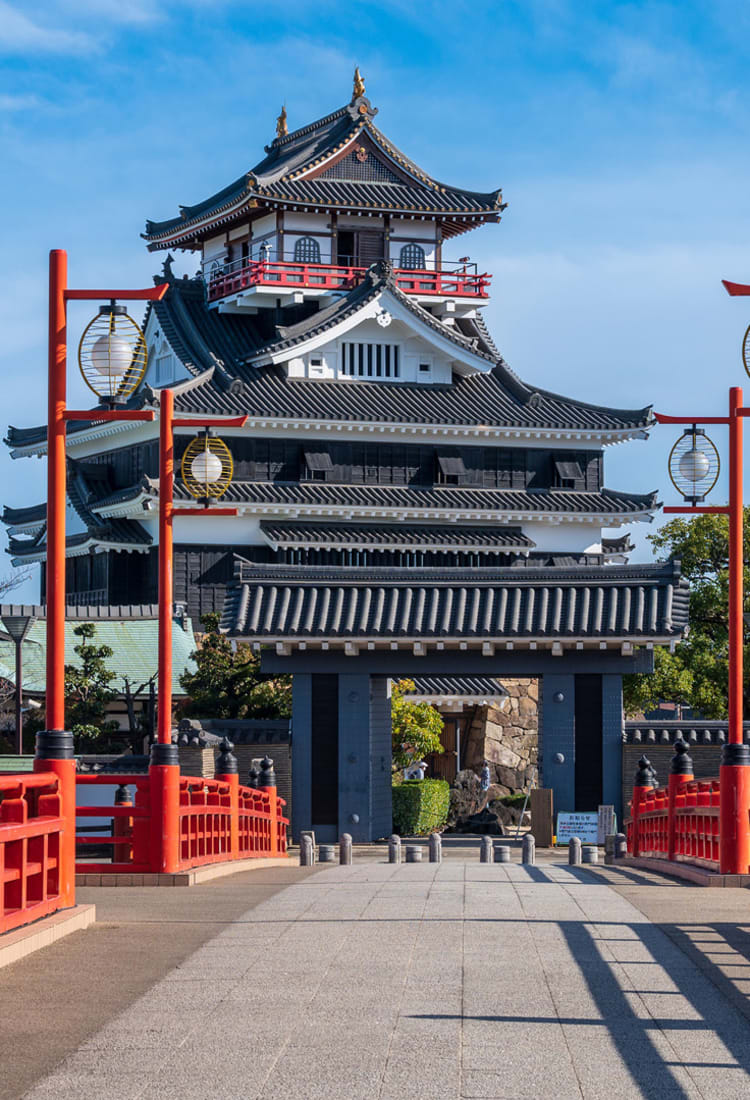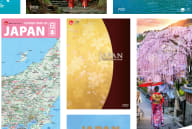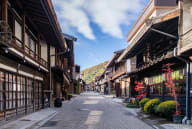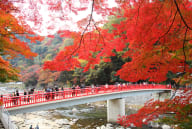
Aichi Unique flavours crafted through tradition and creativity
A Culinary Journey in Aichi
Aichi Prefecture, located in the heart of Japan, is a vibrant region where history, culture, and culinary traditions intersect. With its fertile plains and coastal areas along the Pacific Ocean, Aichi enjoys a mild climate that is ideal for diverse agricultural and seafood production.
Aichi is celebrated for its wide variety of local foods, including the renowned Hatcho miso, a robust, dark miso paste with a deep umami flavour that has been produced in the region for centuries. The prefecture is also famous for its high-quality rice, used in crafting delicate sushi and hearty rice bowls. Aichi's seafood, particularly its tiger prawns and Anago (saltwater eel), is prized for its freshness and taste, often featured in traditional dishes like Hitsumabushi, a flavourful eel set meal.
In addition to these staples, Aichi is known for its unique local specialties such as miso katsu, a breaded pork cutlet topped with rich miso sauce, and Tenmusu, a delightful combination of shrimp tempura wrapped in rice and nori. These dishes reflect the region's innovative spirit and deep-rooted culinary traditions.
Immerse yourself in the flavours of Aichi, where each dish offers a taste of the region's rich history and diverse agricultural bounty. From the savoury depth of Hatcho miso to the freshness of its seafood, Aichi invites you to discover a culinary landscape that is as varied and dynamic as the prefecture itself.
Miso katsu (Pork cutlet with miso flavoured sauce)

What it is (ingredients)
Miso katsu is a regional specialty of Aichi, featuring a crispy pork cutlet coated in a flavourful miso-based sauce. The dish begins with a tender pork cutlet, typically from the tenderloin or loin, which is breaded with flour, egg, and panko breadcrumbs before being deep-fried to golden perfection. The miso sauce, a key component of Miso katsu, is made from red miso paste, sake, mirin (sweet rice wine), sugar, and dashi (Japanese broth made from kombu and bonito flakes). This sauce is simmered until thick and coats the crispy pork cutlet, imparting a rich umami flavour with a hint of sweetness and depth.
History/Origin
Miso katsu is believed to have originated in the mid-20th century in either Nagoya City (Aichi Prefecture) or Tsu City (Mie Prefecture). Today, it has been recognized as a cherished soul food of Aichi, adored by locals and visitors alike.
Where to Eat
Miso katsu can be enjoyed in restaurants specializing in Nagoya cuisine (Nagoya meshi) across Aichi prefecture, particularly in Nagoya city. Many eateries offer their take on Miso katsu, ranging from traditional family-run establishments to modern cafes and Izakaya (Japanese-style dining bar.) It is often served with shredded cabbage, rice, and miso soup, creating a satisfying and hearty meal.
When to Eat
Miso katsu is a versatile dish enjoyed throughout the year. It is commonly served for lunch or dinner and is a popular choice for both locals and visitors exploring Nagoya's culinary delights. Its crispy texture, combined with the bold flavours of the miso sauce, makes it a favourite among those seeking a comforting and flavourful dining experience.
Treat yourself to the delightful flavours of Miso Katsu and marvel at the depth of Aichi's miso food culture.
Hitsumabushi (Grilled Eel with condiments)

What it is
Hitsumabushi is a speciality eel dish from Aichi, consisting of grilled eel fillets (unagi) served over a bed of steamed rice in a large bowl or wooden container. The eel is marinated in a sweet and savoury sauce made from soy sauce, mirin, and sugar before being grilled to a perfect, caramelized finish. The dish is accompanied by various condiments such as chopped green onions, grated wasabi, nori (seaweed), and a light broth (dashi), allowing diners to enjoy the eel in multiple ways. A popular way to enjoy Hitsumabushi is to start with the eel and rice with the sauce as is, then savour it with various condiments and finally pour the served soup over it, Ochazuke-style.
History/Origin
Hitsumabushi originated in Nagoya, Aichi's capital city, during the Meiji period. The name "Hitsumabushi" combines "Hitsu," which refers to the wooden container in which the dish is served, and "Mabushi," meaning to scatter or mix. This dish has become a hallmark of Nagoya's culinary scene, celebrated for its unique presentation and delicious flavour.
Where to Eat
Hitsumabushi can be found in many eel specialty restaurants and traditional Japanese eateries throughout Aichi prefecture, particularly in Nagoya. Hitsumabushi is also a popular dish at local festivals and food events, where visitors can experience the rich flavours of Nagoya’s cuisine.
When to Eat
Hitsumabushi is enjoyed year-round, making it a versatile and satisfying meal for any season. Its rich, savoury taste and unique eating style make it a popular choice for both casual dining and special occasions. In Japan, it is believed that eating eel on the day of the ox grants strength and vitality to endure the heat, making shops selling Hitsumabushi particularly crowded on that day.
Indulge in the rich flavours of Hitsumabushi and experience the culinary heritage of Aichi, where each bite offers a taste of tradition and innovation.
Miso-nikomi-udon (Miso udon stew)

What it is (ingredients)
Miso-nikomi-udon is a comforting dish from Aichi, featuring thick udon noodles simmered in a rich and savoury miso-based broth. The broth is made using red miso paste, which adds a deep umami flavour, along with dashi made from kombu (seaweed) and bonito flakes. The dish typically includes tender pieces of chicken or pork, firm tofu, shiitake mushrooms, and various vegetables such as carrot and leek. These ingredients simmer together to create a robust and satisfying stew that warms both body and soul.
History/Origin
There are various theories about the origin of Miso-nikomi-udon, with one suggesting it may be influenced by "Hoto," a specialty of Yamanashi. Both dishes share similarities in their preparation method of simmering in miso without adding salt to the noodles. It is said that Miso-nikomi-udon originated when "Hoto" was adapted using soybean miso from Mikawa City, Aichi.
Where to Eat
Miso-nikomi-udon can be found in traditional Japanese restaurants, udon specialty shops, and Izakaya (Japanese-style dining bar) throughout Aichi prefecture.
When to Eat
Miso-nikomi-udon is especially popular during the colder months, providing warmth and nourishment on chilly days. It's also enjoyed year-round, offering a satisfying meal that resonates with the changing seasons of Aichi. Whether you're seeking a quick lunch or a comforting dinner, Miso-nikomi-udon promises a delightful culinary experience that captures the essence of Aichi's gastronomic heritage.
Dive into a steaming bowl of miso-nikomi-udon, offering warmth and satisfaction with every slurp!































































